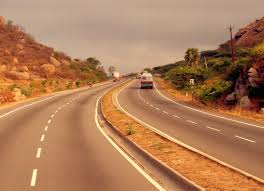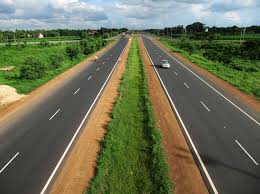It all starts with Delhi, the capital of India. The city has had its origin back in the days of Mahabharata, when a thorny uninhabitable land of Khandavaprastha was converted by the Pandavas into the magnificient Indraprastha. The city had been ruled by many great dynasties of India, including Tomar Rajputs, Pratiharas, Chauhans, Mamluks, Khiljis, Tughlaks, Sayyids, Lodis and the mighty Mughals. It is rightly called the ‘City of Monuments‘ and ‘Land of Seven Cities‘ as history says it. Besides, it is the seat of Government of India.
I head through the Yamuna Expressway, the 8-laned motorway where 100 kmph is the minimum speed. I pass through the land between the two sacred rivers called Ganga-Yamuna Doab with its lush green plains covered with infinitesimally spread farmlands. As I pass, I get a nostalgic glimpse of the sanctity of the route, that was most often travelled upon by the kings and emperors in their quest for indian land expansionism. The very route has also been a part of Grand Trunk Road built by Sher Shah Suri around 1545 AD.
I reach Mathura, the holiest of the holy places dedicated to Lord Krishna. The story of Krishna being born as the eighth son of Vasudev and Devki and destined to kill Kansa flashes a clear image. I indulge in my obsession over ‘Pedas‘ and restart the journey.
I am able to get a glimpse of light falling from a marble structure from a distance, as I see the Taj Mahal on entering Agra. A king, more a lover, could not have expressed his love for his beloved in a more splendid manner. I get a Mughal feel as I see the Agra fort, where once, the powerful mughal kings dwelt and made India one of the wealthiest and most prosperous nations of the times. Somewhere, I get a remembrance of the mental asylum, but I tend to ignore it.
I watch crossing over at Sikandra, the tomb of Akbar and I also know that he loved his Hindu wife more than anything, so I come to know that Her tomb was nearby as well. I see a Kos Minar, which was a milestone-like structure of the medieval time, representing around 3.2 km.
A city full of bangle merchants and glass factories, I came to know was Firozabad. I could not resist but observe generations of people working as glass workers since Akbar’s times.
Then I reached Cawnpore, as it was called by the British, now Kanpur, the place known as ‘The Manchester of the East’ because of the thriving textiles and tannery industries since colonial rule. It was the major site of Indian Rebellian of 1857 AD when garrisoned British officials were beseiged by the Indian rebels.
Then I reach Allahabad, called Prayag in ancient times, the very abode representing Sangam or the concatenation of the three holy rivers – Ganga, Yamuna and Saraswati (not observable now). I also see vast empty lands which are reserved for the once-in-12-years occurring Kumbha Mela, another sacred ceremony to worship river Ganges.
I take a leap into the oldest city of India, Varanasi, also called Benaras, which is also the holiest for the Hindus. I see many Ghats and the temples as I travels across. I see the people engaging in purification of their souls by dipping in the river. By contrast, I also see a Mosque, which was built by Aurangzeb and feel how culturally diverse my country is.
I reach Sasaram, and gather respect for the only warrior in the history of India that had defeated a mighty Mughal emperor Humayun, Sher Shah Suri, who slept peacefully in his tomb amidst a lake.
A lot is to come in my journey further, and I must be prepared for numerous amazements I am about to face.





14 Comments. Leave new
Excellent work!
You know I too wish that someday I travel on the golden quadrilateral. But I will start from Delhi-Mumbai route. It is good you gave brief history of each city you visited.
Yes. Thank you ! History takes us way much deeper to understand the special attributes of a place.
I must say you have written beautifully and with unequivocal eloquence.
I felt like I had real journey .
Thanks Anamika !! I hope you get a real experience someday, it is beautiful out there.
Nice and well explained article
Good effort!
Thank you Junta ! i am glad people are enthusiastic about a travel article too here.
superb! a very well written article… looking forward to reading the next in the series..
Thank you Sam. Part 2 is having some error, while other parts are being published. Do check them out.
Good topic
VEry Well Wriiten 😀 .
M waiting for the next parts 😀
good work 😀 and unique topic 😀
Nice!
nice work